-
 Bitcoin
Bitcoin $117400
-0.25% -
 Ethereum
Ethereum $3762
-0.57% -
 XRP
XRP $3.072
-1.57% -
 Tether USDt
Tether USDt $1.000
0.02% -
 BNB
BNB $786.5
-2.10% -
 Solana
Solana $175.6
-3.15% -
 USDC
USDC $0.9999
0.01% -
 Dogecoin
Dogecoin $0.2166
-2.88% -
 TRON
TRON $0.3268
-2.89% -
 Cardano
Cardano $0.7540
-3.38% -
 Hyperliquid
Hyperliquid $41.82
-3.43% -
 Sui
Sui $3.723
-2.44% -
 Stellar
Stellar $0.4030
-3.66% -
 Chainlink
Chainlink $17.47
-1.80% -
 Bitcoin Cash
Bitcoin Cash $568.2
1.00% -
 Hedera
Hedera $0.2531
-3.51% -
 Avalanche
Avalanche $23.09
-4.91% -
 Litecoin
Litecoin $109.6
1.22% -
 UNUS SED LEO
UNUS SED LEO $8.954
-0.09% -
 Toncoin
Toncoin $3.366
-0.23% -
 Ethena USDe
Ethena USDe $1.001
0.01% -
 Shiba Inu
Shiba Inu $0.00001269
-2.93% -
 Uniswap
Uniswap $9.816
-4.14% -
 Polkadot
Polkadot $3.754
-3.49% -
 Monero
Monero $308.0
-2.79% -
 Dai
Dai $1.000
-0.01% -
 Bitget Token
Bitget Token $4.497
-0.77% -
 Pepe
Pepe $0.00001117
-2.61% -
 Cronos
Cronos $0.1428
-0.40% -
 Aave
Aave $269.9
-4.24%
What are the advantages of using EMA in volatile crypto markets?
The EMA’s responsiveness to recent price changes makes it a vital tool for crypto traders, helping identify trends early and improve timing in volatile markets.
Jul 30, 2025 at 12:29 pm
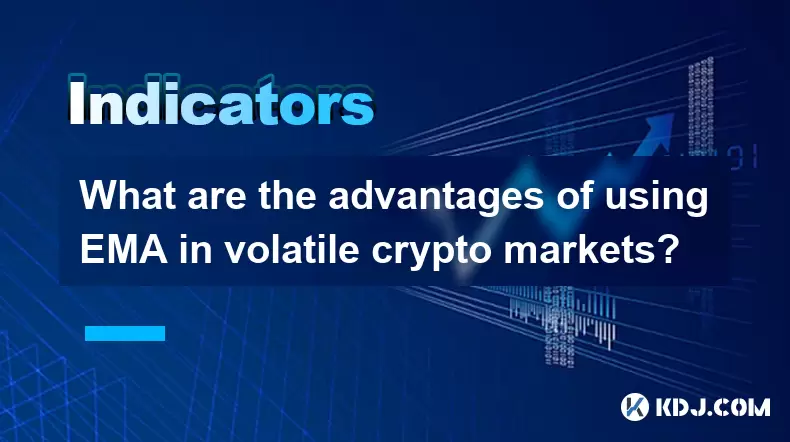
Understanding EMA in the Context of Cryptocurrency Trading
The Exponential Moving Average (EMA) is a widely used technical indicator in cryptocurrency trading that places greater weight on recent price data, making it more responsive to new information compared to the Simple Moving Average (SMA). In the context of crypto markets, where price movements can be extremely rapid and unpredictable, the EMA’s sensitivity to recent price changes provides traders with timely signals. This responsiveness is especially valuable during periods of high volatility, such as during major news events, regulatory announcements, or sudden market sentiment shifts. Because EMA reacts faster than SMA, it allows traders to identify trend changes earlier, potentially improving entry and exit timing.
Enhanced Responsiveness During Rapid Price Swings
One of the primary advantages of using EMA in volatile crypto markets is its ability to adapt quickly to sudden price movements. When the price of a cryptocurrency like Bitcoin or Ethereum spikes or drops sharply within minutes, the EMA adjusts faster due to its weighting mechanism. This is particularly useful when trading on shorter timeframes such as 5-minute or 15-minute charts. For example:
- A 9-period EMA will react almost immediately to a sharp price increase.
- A 21-period EMA provides a slightly smoothed but still responsive signal.
- These fast reactions help traders avoid lagging signals that could result in missed opportunities or delayed exits.
Because each new data point in the EMA calculation is given more importance than older ones, the line follows the price action more closely. This reduces the delay in signal generation, which is critical when trading assets that can move 10% or more in a single hour.
Improved Trend Identification Amid Market Noise
Crypto markets are notorious for their noise—short-term price fluctuations that can mislead traders relying on slower indicators. The EMA helps filter out some of this noise while still capturing the underlying trend. By emphasizing recent data, it reflects the current market momentum more accurately. Traders often use combinations of EMAs, such as the 9 and 21 EMA crossover strategy, to detect trend direction:
- When the 9 EMA crosses above the 21 EMA, it may signal a bullish trend.
- Conversely, when the 9 EMA crosses below the 21 EMA, it may indicate a bearish shift.
This dual-EMA approach allows for dynamic trend confirmation even in choppy conditions. During high volatility, these crossovers can occur frequently, but when combined with volume analysis or support/resistance levels, they become more reliable.
Application in Scalping and Intraday Strategies
Scalpers and intraday traders benefit significantly from EMA due to its real-time responsiveness. These traders aim to capture small price movements over short durations, often holding positions for minutes. The EMA acts as a dynamic support or resistance level during such trades. For instance:
- In an uptrend, the price often pulls back to test the rising EMA before continuing upward.
- In a downtrend, the EMA can act as a resistance level where price bounces downward after a retest.
Traders can use the 50-period or 100-period EMA on 5-minute or 15-minute charts to define the broader intraday trend. Entries are often taken when the price touches the EMA and shows reversal candlestick patterns, such as bullish engulfing or hammer formations. Stop-loss orders can be placed just below the EMA in long positions or above it in short positions, allowing for tight risk management.
Combining EMA with Other Indicators for Confirmation
While EMA is powerful on its own, its effectiveness increases when combined with complementary tools like the Relative Strength Index (RSI), MACD, or volume indicators. In volatile markets, false signals are common, so confirmation from multiple sources enhances reliability. For example:
- A bullish EMA crossover occurring alongside RSI rising above 50 strengthens the buy signal.
- If MACD histogram turns positive at the same time, it adds further validation.
- High trading volume during the crossover suggests strong market participation, reducing the chance of a fakeout.
Traders can set up alerts on platforms like TradingView to notify them when specific EMA crossovers occur, especially when aligned with these secondary indicators. This multi-layered approach reduces emotional decision-making and increases the statistical edge in fast-moving environments.
Customizing EMA Settings for Different Volatility Levels
Not all crypto assets behave the same way—some, like stablecoins, exhibit low volatility, while others, like meme coins, can swing wildly. Therefore, adjusting EMA periods based on asset volatility is crucial. For highly volatile tokens:
- Shorter EMAs like 12 or 14 periods may be more effective.
- For blue-chip cryptos like Bitcoin, a 20 or 50-period EMA might offer better balance between responsiveness and noise reduction.
Traders can backtest different EMA combinations on historical data using tools like Python’s Pandas library or built-in strategy testers in trading platforms. For example:
- Apply a 10 and 30 EMA crossover on Dogecoin’s 1-hour chart over the past three months.
- Measure win rate, average profit per trade, and drawdown.
- Adjust the periods until optimal performance is achieved for that specific asset.
This customization ensures the EMA remains relevant across different market conditions and asset classes within the crypto ecosystem.
Frequently Asked Questions
What is the difference between EMA and SMA in crypto trading?
The EMA gives more weight to recent prices, making it more responsive to sudden changes, while the SMA treats all data points equally. In fast-moving crypto markets, EMA detects trend shifts faster, which is essential for timely decisions.
Which EMA periods are most commonly used by crypto traders?
Popular EMA combinations include 9 and 21, 12 and 26, and 50 and 200. Short-term traders prefer 9 and 21 for quick signals, while long-term investors monitor 50 and 200 for macro trends.
Can EMA be used during sideways or ranging markets?
Yes, but with caution. In ranging markets, EMA may produce frequent false signals due to crossovers. It’s best to combine EMA with oscillators like RSI or Bollinger Bands to identify overbought or oversold conditions.
How do I set up EMA on my trading platform?
On most platforms like Binance, Coinbase Advanced, or TradingView:
- Open the chart of the desired cryptocurrency.
- Click on “Indicators” or “Studies.”
- Search for “Exponential Moving Average.”
- Add the desired period (e.g., 9, 21).
- Repeat to add a second EMA for crossover analysis.
- Adjust colors and line styles for clarity.
Disclaimer:info@kdj.com
The information provided is not trading advice. kdj.com does not assume any responsibility for any investments made based on the information provided in this article. Cryptocurrencies are highly volatile and it is highly recommended that you invest with caution after thorough research!
If you believe that the content used on this website infringes your copyright, please contact us immediately (info@kdj.com) and we will delete it promptly.
- LYNO Token Presale: AI Arbitrage Revolution in DeFi
- 2025-07-31 05:11:11
- Pepecoin Successors: Can These Cryptocurrencies Make You a Millionaire?
- 2025-07-31 05:50:12
- AML Bitcoin Fraud: Cracking Down on Crypto Crime in the Big Apple and Beyond
- 2025-07-31 04:33:53
- Cardano (ADA) in 2025: Navigating Crypto's Future
- 2025-07-31 03:52:07
- Solana Meme Coin Price Prediction: Will the Frog Outleap the Dog?
- 2025-07-31 03:52:07
- Bitcoin's Bullish Outlook: CryptoQuant's Insights on Futures Market Cooling
- 2025-07-31 03:59:10
Related knowledge

How does the VWAP line help in identifying overbought and oversold market conditions?
Jul 31,2025 at 05:19am
Understanding the VWAP Line and Its Role in Technical AnalysisThe Volume Weighted Average Price (VWAP) is a critical tool used by traders within the c...
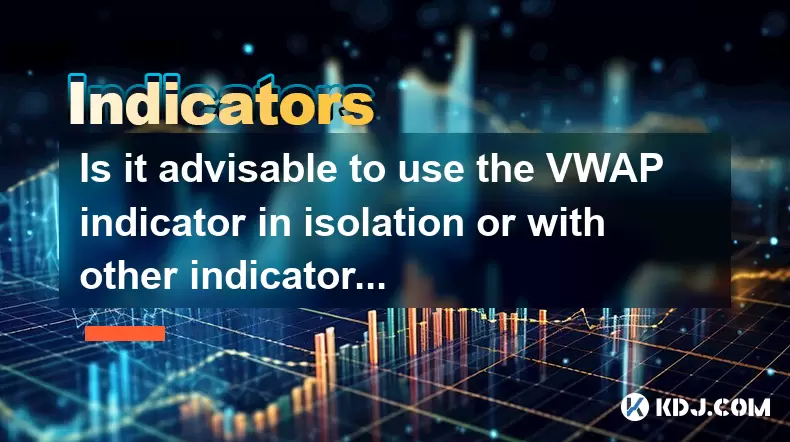
Is it advisable to use the VWAP indicator in isolation or with other indicators?
Jul 31,2025 at 06:48am
Understanding the VWAP Indicator and Its Core FunctionalityThe Volume Weighted Average Price (VWAP) is a widely used technical analysis tool in the cr...
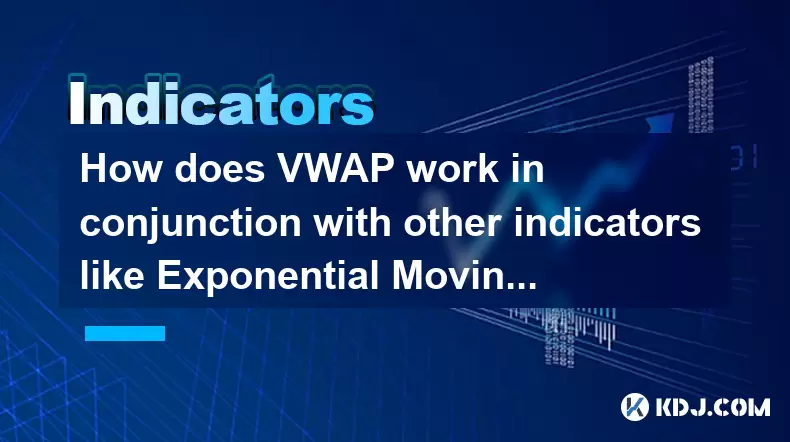
How does VWAP work in conjunction with other indicators like Exponential Moving Averages (EMAs)?
Jul 31,2025 at 04:38am
Understanding VWAP and Its Role in Crypto TradingThe Volume Weighted Average Price (VWAP) is a critical analytical tool in cryptocurrency trading, par...
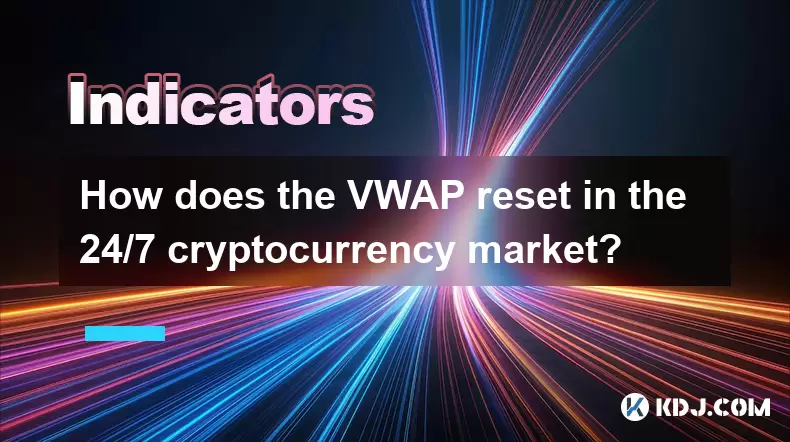
How does the VWAP reset in the 24/7 cryptocurrency market?
Jul 31,2025 at 06:38am
Understanding VWAP in Cryptocurrency MarketsThe Volume Weighted Average Price (VWAP) is a trading benchmark that calculates the average price of an as...

What exactly does the VWAP indicator measure?
Jul 31,2025 at 03:26am
Understanding the Core Concept of VWAPThe VWAP (Volume Weighted Average Price) indicator measures the average price of a financial asset, weighted by ...
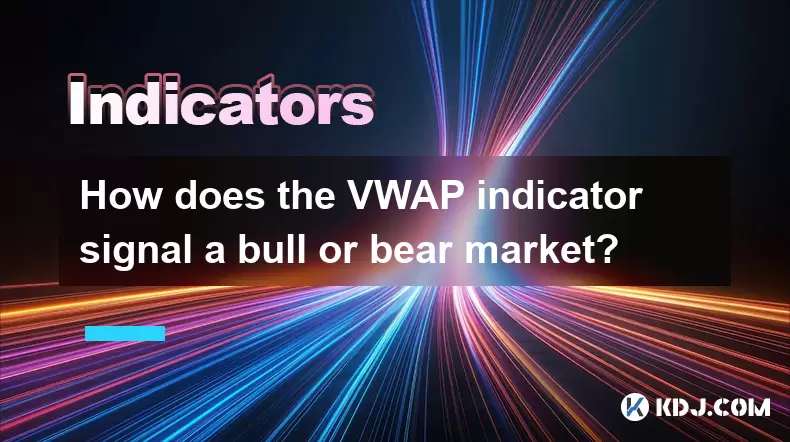
How does the VWAP indicator signal a bull or bear market?
Jul 31,2025 at 02:57am
Understanding the VWAP Indicator in Cryptocurrency TradingThe Volume Weighted Average Price (VWAP) is a widely used technical analysis tool in cryptoc...

How does the VWAP line help in identifying overbought and oversold market conditions?
Jul 31,2025 at 05:19am
Understanding the VWAP Line and Its Role in Technical AnalysisThe Volume Weighted Average Price (VWAP) is a critical tool used by traders within the c...

Is it advisable to use the VWAP indicator in isolation or with other indicators?
Jul 31,2025 at 06:48am
Understanding the VWAP Indicator and Its Core FunctionalityThe Volume Weighted Average Price (VWAP) is a widely used technical analysis tool in the cr...

How does VWAP work in conjunction with other indicators like Exponential Moving Averages (EMAs)?
Jul 31,2025 at 04:38am
Understanding VWAP and Its Role in Crypto TradingThe Volume Weighted Average Price (VWAP) is a critical analytical tool in cryptocurrency trading, par...

How does the VWAP reset in the 24/7 cryptocurrency market?
Jul 31,2025 at 06:38am
Understanding VWAP in Cryptocurrency MarketsThe Volume Weighted Average Price (VWAP) is a trading benchmark that calculates the average price of an as...

What exactly does the VWAP indicator measure?
Jul 31,2025 at 03:26am
Understanding the Core Concept of VWAPThe VWAP (Volume Weighted Average Price) indicator measures the average price of a financial asset, weighted by ...

How does the VWAP indicator signal a bull or bear market?
Jul 31,2025 at 02:57am
Understanding the VWAP Indicator in Cryptocurrency TradingThe Volume Weighted Average Price (VWAP) is a widely used technical analysis tool in cryptoc...
See all articles

























































































